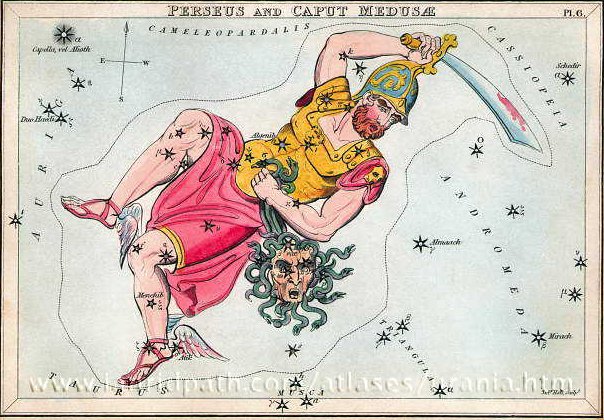6. At my assumed date for G (ca 1870 A.D.) the Pleiades evidently had their heliacal risings in the interval 55.3-56.3 or 10 days before Ain (e.g. 9.6 = 65.7 - 56.1 for Alcyone). This would have been around 'May 16 (136).
"The title, written also Pliades and, in the singular, Plias, has commonly been derived from πλεϊν, 'to sail', for the heliacal rising of the group in May marked the opening of navigation to the Greeks, as its setting in the late autumn did the close." (Allen) Since the time of the Greeks precession must have moved the firmanent ahead in the solar year with around a month. The Pleiades would therefore at the time of the Greeks had risen heliacally about a month earlier than their position at 'May 16, which I have interpreted to be the date for manu rere in Gb8-23:
The conclusion might then be that the creator of the G text has kept the old time schedule alive and documented the calendar map as it once was for the Greeks. However, much indicates this is a faulty explanation. Instead the Gregorian calendar was probably one of his 'bottom planks'. A better explanation might be to say that the time of the heliacal risings for stars is no universal measure, the definition is a variable. Lockyer (in his The Dawn of Astronomy) has described it:
The manzil Murzim was beginning on August 4 (remarkably day 80 + 136 = 216 in the Gregorian calendar) and ca 40 days after the true heliacal rising of Mirzam):
From 'May 28 (148) and the true helical rising of Aldebaran to June 26 (177) - the beginning of the manzil Al Tuwaibe - there are 29 nights. Apparent imprecisions in the manzil system could be due to the force of numbers. 177 = 6 * 29˝ and June 26 is a month later than May 26. My fairly secure interpretation of the beginning of the front side of the G tablet maybe proves I was wrong in guessing there is no place for a 'life-less Sea' (moana) in the text. At the close of the back side there are lots of manu rere ('living spirit') glyphs:
"... Aratos ... placed them [the Pleiades] near the knees of Perseus; thus as in most of his poem, following Eudoxos, whose sphere, it is said, clearly showed them in that spot." (Allen)
In Urania's Mirror α Persei (Algenib) is drawn to be right above the head of Medusa. Algol (β Persei) is rising only 4 days earlier:
Could it be the cut-off head of Medusa which is drawn at top left in Gb8-17?
'May 10 is 50 (= 5 * 10) days after spring equinox (north of the equator) or 130 days from the beginning of the Gregorian calendar. The great ure sign in front might indicate a release of birds - the spirits of the new generation.
There is a mighty force in the penis (ure): ... And Tuna stripped off his loincloth, and he held it up; at once a mighty wave reared up and swept toward that land ... | ||||||||||||||||||||||||||||||||||||||||||||||||||||||||||||||||||||||||||||||||||||||||||||||||||||||||||||||||||||||||||||||||||||||||||||||||||||||||||||||||||||||||||||||||||||||||||||||||||||||||||||||||||||||||||||||||||||









